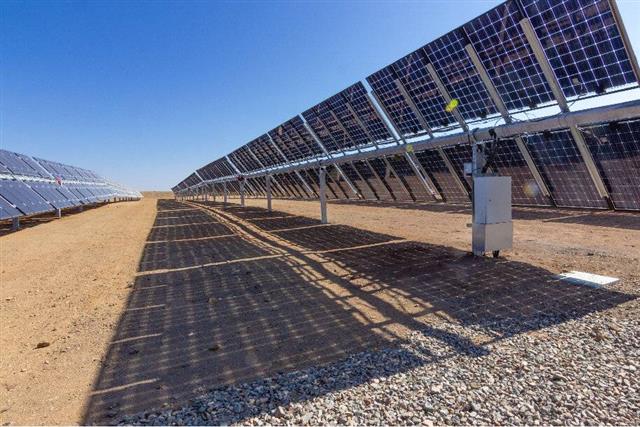If the era of the forerunners belongs to PERC technology, then the coming era of large utility-scale solar plants is likely to belong to n-type TOPCon.

For the solar PV industry, efficiency and economics are the key. Although the debate over module sizes in the past two years may seem to have deviated from this principle, going for larger sizes was inevitable since the conversion efficiency of PERC cells has almost reached its theoretical limit.
However, the risks of using large-format modules have gradually surfaced. Multiple power plant design institutes in China have voiced concerns over larger wafers and high power modules.
When the maximum short-circuit current of modules exceeds 15A, it undermines the reliability and safety of modules and systems. When it passes 18A, the risk will increase exponentially. Large utility-scale projects, however, require higher efficiency and higher power, while maintaining low current levels.
N-type TOPCon module is a perfect solution for that.
Higher power
The power output of a single n-type TOPCon module can easily reach over 600 watts.
Higher efficiency
The conversion efficiency of commercial TOPCon modules has reached 22.3%, 1% higher than that of PERC modules. For every 1% increase in module efficiency, the power output of a single module will be up by about 5%.
Lower current
Take the 620W n-type TOPCon module recently released by a world-leading module manufacturer as an example, the maximum short-circuit current is around 14A.
Higher bifacial gain
Most of the ground in the area where utility-scale solar plants is located is sandy with high reflectivity, perfect for bifacial modules.
High bifacial gain is another trait of n-type TOPCon modules. For example, the bifacial gain of the above-mentioned TOPCon module is 85%, much higher than that of bifacial PERC modules, which is 70%.
Lower temperature coefficient
Large utility-scale solar plants are exposed to strong direct sunlight, with high illumination hours and intensity, resulting in high surface temperature of the modules. The promised temperature coefficient of the above-mentioned module is within -0.30%.
Weather resistance and anti-aging
Deserts, Gobi deserts, hilly area and coal mining subsidence area where large utility-scale solar plants are located are exposed to extremely harsh environments. Therefore, the modules need to be resistant to extreme environment and weathering.
The annual degradation rates of n-type modules are lower than those of P-type modules. Its degradation rate in the first year is only half of that of P-type modules. The recently released 620W n-type modules can provide 30-year warranty for mono-facial and bifacial modules.
Less susceptible to LID and LeTID
Areas where large utility-scale solar plants are located are exposed to intense sunlight. Developers put great emphasis on the modules’ light induced degradation (LID) and light-elevated temperature-induced degradation (LeTID).
Although PERC module’s LID and LeTID have been controlled at 2%, it is still incomparable to n-type module which is immune to LID.
This Thursday, Solarbe has invited Dr. Martin Green of UNSW, Dr. Andreas Lambertz from Forschungszentrum Jülich GmbH, Dr. Doug Rose from SunPower and Dr. Jochen Rentsch from Fraunhofer ISE to share their insights on next generation solar cell technologies. Join us by clicking on the link below:



